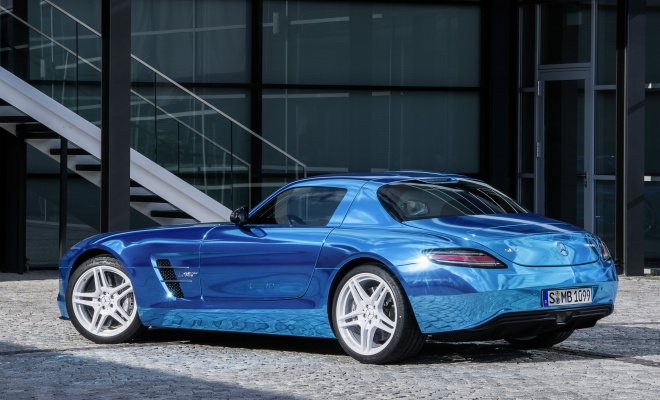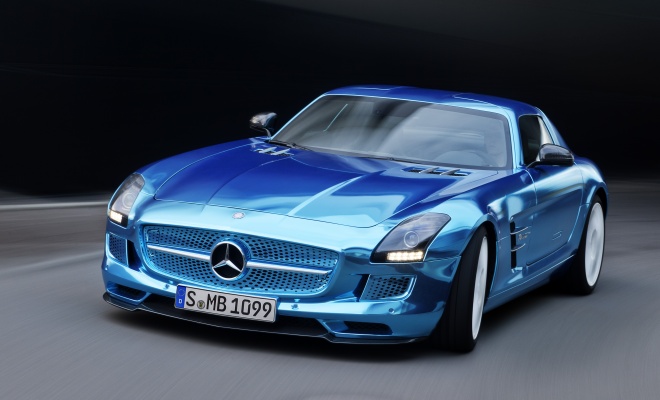
Call to mind Mercedes 4x4 cars and chances are you’ll picture things that are big, bluff and built for hauling a gaggle of people across a ploughed field. You probably wouldn’t imagine a low-slung and very shiny blue sports car with gullwing doors.
But the car in the pictures is indeed a four-by-four, even if it isn’t remotely big or bluff, or capable of carrying a gaggle of people anywhere, given that it only has two seats. What’s more, this one is electric.
Each corner of the Mercedes-AMG SLS Coupé Electric Drive is powered by its own electric motor, each controlled separately and each capable of mustering 138kW. That gives the electric SLS a grand total of 552kW to play with, or 740bhp in old money. As a result, it is quite quick. Standstill to 62mph can be wrapped up in about the time it takes Usain Bolt to tie a shoelace – about 3.9 seconds if you need to be more precise.

The four individual motors are mounted inboard, close to the centreline of the car. Each one drives its particular wheel through a closely mounted reduction gearbox and driveshaft.
This arrangement is a lot better than hub-mounted motors for a sporting car as it keeps the weight where it belongs for agility – low down and as close as possible to the centre of the car. Keeping the wheels as light as possible is also preferable for responsive suspension.
One of the benefits of the four-by-four setup is that the motors can play a very active role in the vehicle’s dynamics. The torque supplied to each wheel can be closely controlled, not simply in the supply of drive but also through the use of regenerative braking to yield negative torque. By selectively pulling and pushing at each corner in this way, the motors can chuck the car about with incredible, computer-controlled finesse. The result is increased agility with less wasted energy, supreme immunity to oversteer and understeer, and an increased life expectancy for brakes and tyres.

Power for the four motors comes from a 60kWh lithium-ion battery, mounted along the spine of the vehicle inside a carbon-fibre tunnel. For comparison, the battery in a Nissan Leaf stores 24kWh, while the original Tesla Roadster boasted 53kWh.
The SLS’s battery is made up of 864 smaller cells – somewhat less than the 6,831 laptop batteries employed by the Tesla. Overall the battery weighs 548kg – about the same as the Tesla unit – and is kept at optimum temperature through a liquid cooling and heating system.
Mercedes quotes a range of 155 miles under the NEDC test regime, although real-world range is likely to vary enormously according to the restraint shown by the driver’s right foot.

Given such a big battery, charging times could be an issue – a domestic UK socket needs more than 19 hours running at full pelt simply to clock up 60kWh, never mind recharge a 60kWh battery from flat. As a result, a high-power wall-box is recommended, which can cram in sufficient electrons to replenish the battery in a more tolerable three hours.
Less tolerable for most of us will be the price. When the SLS Electric Drive goes on sale in Germany next summer it will cost €416,500 or about £335,000.
As 4x4s go, that’s undeniably at the upper end.
SLS electric: not your average Mercedes 4x4
25 October 2012
Read more about: electric cars Mercedes-Benz



